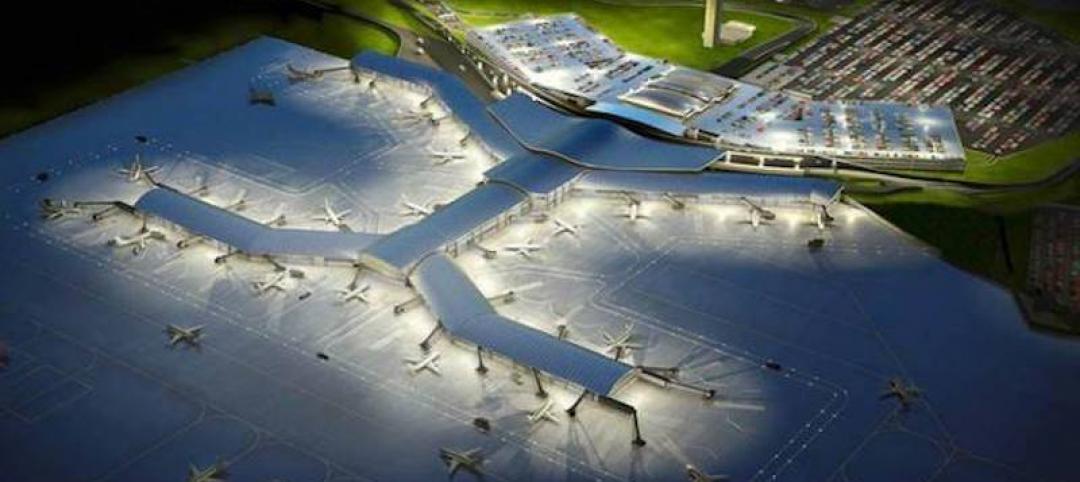Geothermal heat pump (GHP) systems, which harness moderate and constant temperatures just below the Earth’s surface, are being deployed in nearly every region of the world and in residential, commercial, institutional, and industrial environments with great success. Despite recent setbacks in deployments in many parts of the world due to the economic downturn, the future looks bright for the worldwide GHP market.
According to a recent report from Navigant Research, the worldwide installed capacity of GHP systems will grow by nearly 150 percent over the next 7 years, from 52.7 gigawatts-thermal (GWt) to 127.4 GWt.
“The renewable energy policies that led to strong growth in the GHP market in the last decade are still in place, and will drive expansion as the global economy improves,” says Mackinnon Lawrence, principal research analyst with Navigant Research. “Although their overall penetration remains low, GHP installations are gaining traction in both the construction industry and the regulatory environment, and this high-efficiency technology will likely play a larger role in both new build and retrofit projects going forward.”
In some ways, the fortunes of the GHP market are tied to that of the housing market: As the number of housing starts increases, so do the opportunities for installers and engineers of GHP systems to deploy their technology. Yet, a number of factors affect a homeowner’s or residential developer’s decision to deploy GHPs in a project, including quality of construction, construction budget, ease of getting a loan, and importance of green image. Thus, while the rate of housing starts has grown steadily over the last 2 years, the rate of GHP deployments has not kept pace, the study concludes.
The report, “Geothermal Heat Pumps,” analyzes the global market opportunity for geothermal heat pumps, including a comprehensive examination of GHP markets, demand drivers, existing and emerging technologies, the public policy and regulatory environment, and key industry players. Market forecasts, segmented by geography and market segment, extend through 2020 and include examinations of market dynamics in all key regions worldwide. An Executive Summary of the report is available for free download on the Navigant Research website.
About Navigant Research
Navigant Research, the dedicated research arm of Navigant, provides market research and benchmarking services for rapidly changing and often highly regulated industries. In the energy sector, Navigant Research focuses on in-depth analysis and reporting about global clean technology markets. The team’s research methodology combines supply-side industry analysis, end-user primary research and demand assessment, and deep examination of technology trends to provide a comprehensive view of the Smart Energy, Smart Utilities, Smart Transportation, Smart Industry, and Smart Buildings sectors. Additional information about Navigant Research can be found at www.navigantresearch.com.
About Navigant
Navigant is a specialized, global expert services firm dedicated to assisting clients in creating and protecting value in the face of critical business risks and opportunities. Through senior level engagement with clients, Navigant professionals combine technical expertise in Disputes and Investigations, Economics, Financial Advisory and Management Consulting, with business pragmatism in the highly regulated Construction, Energy, Financial Services and Healthcare industries to support clients in addressing their most critical business needs. More information about Navigant can be found at www.navigant.com.
Related Stories
Giants 400 | Oct 3, 2017
Top 30 airport engineering firms
AECOM, Burns & McDonnell, and Arup top BD+C’s ranking of the nation’s largest airport sector engineering and EA firms, as reported in the 2017 Giants 300 Report.
Airports | Sep 11, 2017
Terminal modernization: Why bother? Part I
A terminal modernization program can be a complicated and expensive task that airport operators may be hesitant to undertake unless necessitated by demands for increased capacity. This is the first post in our series examining why airport operators should bother to upgrade their facilities, even if capacity isn’t forcing the issue.
Hotel Facilities | Jul 5, 2017
It only took 26 days to complete construction on the Crowne Plaza Changi Airport hotel extension
PPVC techniques allowed the project to save time and manpower.
Airports | Jun 26, 2017
Newark Liberty International Airport breaks ground on $2.4 billion redevelopment project
The project includes a new 1 million-sf terminal building with 33 domestic aircraft gates.
Building Team Awards | Jun 8, 2017
Missing link: Denver International Airport and Transit Center
Gold Award: A new mixed-use transit center fulfills Denver’s 28-year plan to improve access to the nation’s fifth-busiest airport.
Airports | May 15, 2017
Five trends for airport retail
CallisonRTKL Vice President Kevin Horn pinpoints how travel retail is changing dramatically.
Reconstruction & Renovation | Mar 16, 2017
Pols are ready to spend $1T on rebuilding America’s infrastructure. But who will pick which projects benefit?
The accounting and consulting firm PwC offers the industrial sector a five-step approach to getting more involved in this process.
Airports | Feb 23, 2017
New Orleans Airport to add five additional gates and $110 million to current expansion
The project is being hailed as the city’s most transformative since the construction of the Superdome.
Projects | Jan 25, 2017
Trump prioritizes infrastructure projects, as rebuilding America is now a hot political potato
Both parties are talking about $1 trillion in spending over the next decade. How projects will be funded, though, remains unresolved.
Airports | Jan 17, 2017
JFK Airport set for $10 billion renovation
In addition to the airport itself, the overhaul will also improve road and rail access to meet projected passenger growth.

















